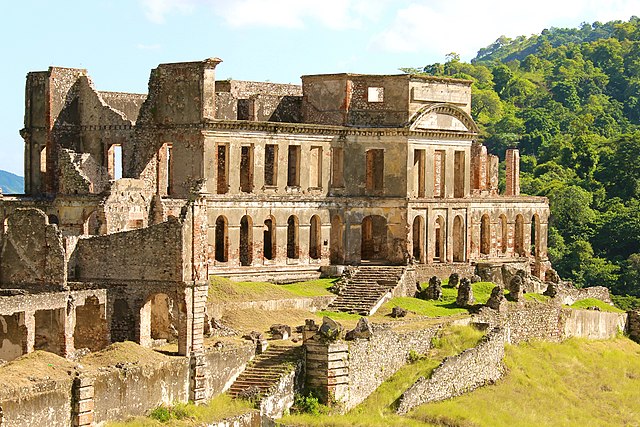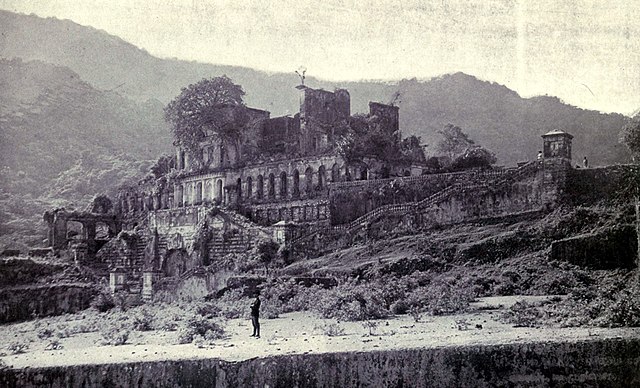The Palace of Sans-Souci, or Sans-Souci Palace, was the principal royal residence of Henry I, King of Haiti, better known as Henri Christophe. It is located in the town of Milot, approximately five kilometres (3 mi) northeast of the Citadelle Laferrière, and thirteen kilometres (8 mi) southwest of the Three Bays Protected Area. Being among the first buildings constructed in a free Haiti after the Haitian Revolution, the Palace and the neighboring Citadelle, are Haitian icons and global symbols of liberty, and were inscribed on the World Heritage List in 1982.
Aerial view of the palace ruins
Sans-Souci Palace, National History Park, Haiti.
Sans Souci. Castle of King Christopher of Haiti, lithograph by Gottfried Küstner (1800–1864) from a work by Carl Ritter, published in 1836.
Sans-Souci Palace in 1907.
Henri Christophe was a key leader in the Haitian Revolution and the only monarch of the Kingdom of Haiti.
Portrait by Richard Evans, c. 1816
Equestrian statue of Henri Christophe in the Haitian capital Port-au-Prince
Haitian gourde coin with portrait of Henry I in the style of a Roman solidus, minted c. 1820.
In this portrait executed by Johann Gottfried Eiffe, a German artist in the Royal Court, Henry wears the grand cross of the Royal and Military Order of St. Henry (Ordre Royal et Militaire de Saint Henry)








